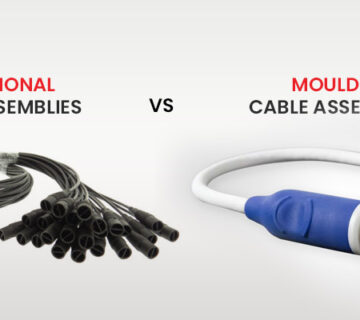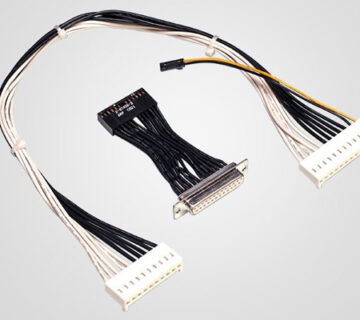Wire assemblies are effective components within an electrical system that consist of several wires, conductors, connectors, and many other components, all combined to be able to transmit signal or power. However, all of this is in vain if there is not proper insulation. There are a variety of materials that can be chosen to create an insulation for a wire assembly to prevent it from damage.
Thermoplastic rubber
Thermoplastic rubber is one of the most affordable options, and one of the most traditional material used too. It is a flexible, temperature resistant, and weather resistant material, having an enhanced lifespan with a great ageing process. However, rubber has been replaced by many other varieties of materials over the years.
Polyethene
Polyethene is best for applications where high voltage is involved, because of the excellent electrical properties and resistance of the material against different levels of temperature, and the harshest of conditions. The material is amazingly effective at withstanding both extremes – from freezing conditions to boiling applications. Further, polyethene is the perfect choice for minimizing power loss and leakage of current or data. Thus, you get a maximum efficient supply of current with polyethene. Depending upon the chemical properties of the material, there are different types of polyethene, like low density, linear low density, medium density, high density, cross-linkable, and chlorinated polyethene.
Polyvinyl Chloride (PVC)
PVC is one of the most common materials used for wire assembly insulation. The material became popular over traditional rubber insulation because PVC is easy to process than rubber. Also, PVC is very cost-effective and also has an excellent lifespan. It is a flexible and fire-resistant material that can be easily used in the most challenging and extremely high temperature applications. PVC is also apt for protecting the wires against oils and chemicals; thus making it ideal for applications in environments of chemical exposure. Last but not the least, PVC is also recyclable, which means it poses no harm for the environment. With all of these benefits, PVC is an ideal material used for low voltage wires, local telecommunication cables, and automotive wires.
Fluorinated Ethylene-Propylene (FEP)
FEP is a blend of tetrafluoroethylene and hexafluoropropylene, which is a material ideal for temperature sensing wires. FEP is a popular material used in industrial applications, not only for insulation and jacketing, but also as a dielectric. The material is chemical resistant, water resistant, temperature resistant, and has amazing electric and physical properties, making it perfect for all kinds of chemical, gas, and oil industries. It is so tough that it is also preferred for use in military applications. FEP is also great for usage in environments that have changing weather conditions, because the material is excellent at withstanding all kinds of weather conditions.
Nylon
When you want a soft material, nylon is a great choice. It is a highly flexible and adjustable material, but that doesn’t mean it is fragile. Even though being soft and flexible, nylon is a tough material that can protect the wires against external factors and abuse. Nylon insulation can help in applications where there is a good amount of bending and mechanical movement involved. Also, nylon is a comparatively cheaper option than other materials. This is why nylon is a great choice for automotive and aerospace industries, and other industrial projects too.
So, what’s your pick? Depending upon your industry, application, and requirements, you can choose the most apt material for your wire assembly.
No matter what your requirement, you can always rely on Miracle Electronics, when you’re looking for genuine, reliable, and proficient wire assembly manufacturers in India. Here, you can have your wire assemblies customized as per your preferences and requirements, using the most apt materials, dimensions, and designs.




